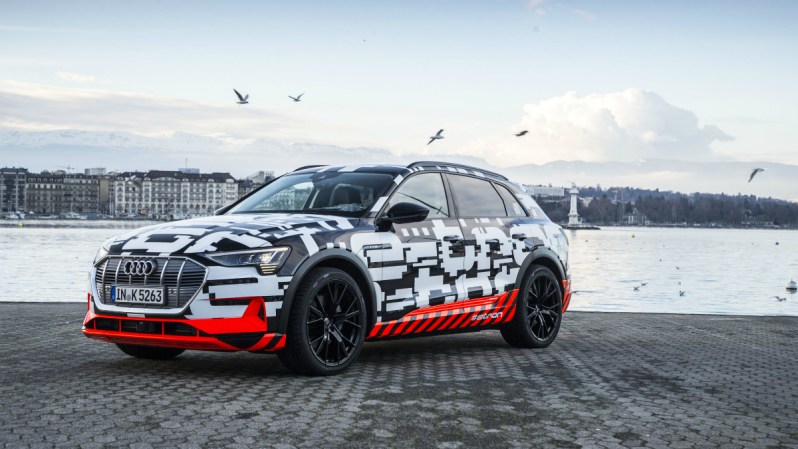
Not long ago, Audi introduced its virtual cockpit display, bringing a fully digital instrument cluster to production vehicles. The trend of digitizing driver gauges can now be seen across most automakers – at all price tiers. Some brands have improved upon Audi’s original design, but most are still playing catch-up.
Audi hopes to have the same impact with its next round of interior innovations. The German automaker recently revealed the cabin of its all-electric e-tron SUV, which shows small and big leaps for in-car tech. The most significant gadget is a pair of screens embedded within both front door panels. What we’re looking at is the first production-intent application of digital side mirrors.

“Mirrors” may not even be the right word for what this is, because unlike the reflective glass we rely on to change lanes, back into a parking space, or monitor for passing pedestrians, the image projected on each door monitor can be modified. The view can be switched between settings for turning, parking, and highway driving, and the setup also zooms in and out.
Here’s how it works: A pair of external mounted cameras (occupying the same real estate door mirrors typically do) transmit video to 7.0-inch OLED screens mounted on the forward edge of each door panel. Drivers can then reference these real-time videos like they would traditional side mirrors.

No doubt the position, resolution, and settings of these monitors will take some getting used to, but it’s reasonable to assume they will replace door mirrors on most new vehicles in the near future. Furthermore, as camera integration methods improve, there may be no need for protruding winglets on cars. Seeing a vehicle without mirrors will be odd, but it may give designers and engineers a whole new canvas.
There’s only one bit of bad news: U.S. regulations don’t currently allow for Audi’s digital mirror tech, so only Euro-model E-Trons will get the goods. Hopefully America gets on board soon.

The e-tron interior also showed a new take on the gear selector. A floating L-shaped hand rest extends from the passenger side of the center console, with a thumb slider for selecting drive, reverse, or neutral. Though Audi calls the e-tron a prototype, this cabin is exactly what we’ll expect to see in the production model (due sometime next year).


